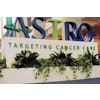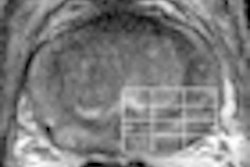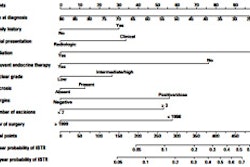The American Society for Radiation Oncology (ASTRO) on August 4 announced that it has published evidence-based guidelines for the use of hypofractionated whole-breast radiation therapy (WBRT) treatment.
Published online in the International Journal of Radiation Oncology, Biology, Physics, the new guidelines give physicians guidance in using hypofractionated WBRT, which offers breast cancer patients the opportunity to receive fewer radiation therapy treatments over a dramatically shortened period of time than conventional treatment.
For the U.S. healthcare system, the potential to reduce treatment costs of women diagnosed with early-stage breast cancer is enormous. By declaring equivalence of the two treatments, U.S. cancer centers now have ASTRO's official blessing to adopt radiation therapy protocols that are the norm and have been used for years in Canada, the U.K., and Australia (Int J Radiation Oncology Biol Phys, July 16, 2010).
With 207,090 women estimated to be diagnosed with invasive breast cancer in 2010 alone, according to American Cancer Society (ACS) statistics, adopting these guidelines in the U.S. could potentially reduce breast cancer treatment costs by millions of dollars during this decade.
A task force consisting of eight experts in breast cancer radiation oncology analyzed the results of 45 clinical trials published in peer review journals from 1990 through February 2009. Out of 558 relevant clinical trials, these 45 compared the outcomes of conventional and accelerated whole-breast radiation therapy, hyperfractionated radiation therapy with accelerated partial-breast irradiation, hypofractionated radiation therapy with no irradiation, and hyperfractionated radiation therapy with the same treatment plus a boost.
However, results from four randomized clinical trials alone conducted in Canada and the U.K. that followed 7,095 patients over the 53,000 patient years generated enough data to allow an evidence-based comparison of conventional and hypofractionated radiation therapy, according to lead author Benjamin Smith, MD, assistant professor of radiation oncology at M. D. Anderson Cancer Center at the University of Texas in Houston. The ASTRO task force defined hypofractionation as a daily radiation dose exceeding 2 Gy.
Breast cancer patients identified as eligible for the accelerated treatment schedule are women 50 years of age or older at time of diagnosis, who have undergone breast-conservation surgery and have a confirmed pathology stage of T1 or T2 with no nodal involvement. Patients with confirmed ductal carcinoma in situ and/or who received systemic chemotherapy treatments were excluded due to insufficient data. The task force did not endorse the effectiveness of accelerated WBRT treatment for women younger than 50; they did not believe that enough data had been published to extend the eligibility criteria to include younger women.
The task force recommended that treatment should be a minimum radiation dose no less than 93% of the prescription dose, and the maximum dose should be no greater than 107% of the prescription dose (± 7%) in the central axis plane, as calculated using 2D treatment planning without tissue heterogeneity corrections. Use of 3D planning techniques to minimize dose inhomogeneity and to reduce toxicity was strongly recommended.
The experts were unable to reach a consensus opinion on the appropriateness of adding a tumor-bed boost of radiation in patients receiving the hypofractionated treatment. For patients receiving a radiation boost, doses of 10-16 Gy in 2-Gy fractions, or 10 Gy in 2.5-Gy fractions, were considered acceptable. For patients not receiving a radiation boost, the task force recommended a dose schedule of 42.5 Gy in 16 fractions over 22 days. The task force also recommended that the heart should be excluded from the primary treatment fields, due to lingering uncertainty regarding late effects of hypofractionated treatment on heart function.
"We hope that this guideline will encourage the additional research needed to resolve the remaining issues we have identified regarding the promise and limitations of hypofractionated WBRT for specific patient groups," the authors wrote. "For patients where the data to support this treatment are not as strong, it can still be considered an option, but further treatment is needed," Smith said.
Copies of the guideline may be obtained free of charge by contacting ASTRO at [email protected].
By Cynthia E. Keen
AuntMinnie.com staff writer
August 5, 2010
Related Reading
ASTRO publishes IMRT guidelines, August 7, 2009
IMRT reduces skin toxicity symptoms for breast cancer patients, July 20, 2009
ASTRO publishes APBI guidelines for early-stage breast cancer, July 19, 2009
Copyright © 2010 AuntMinnie.com



















